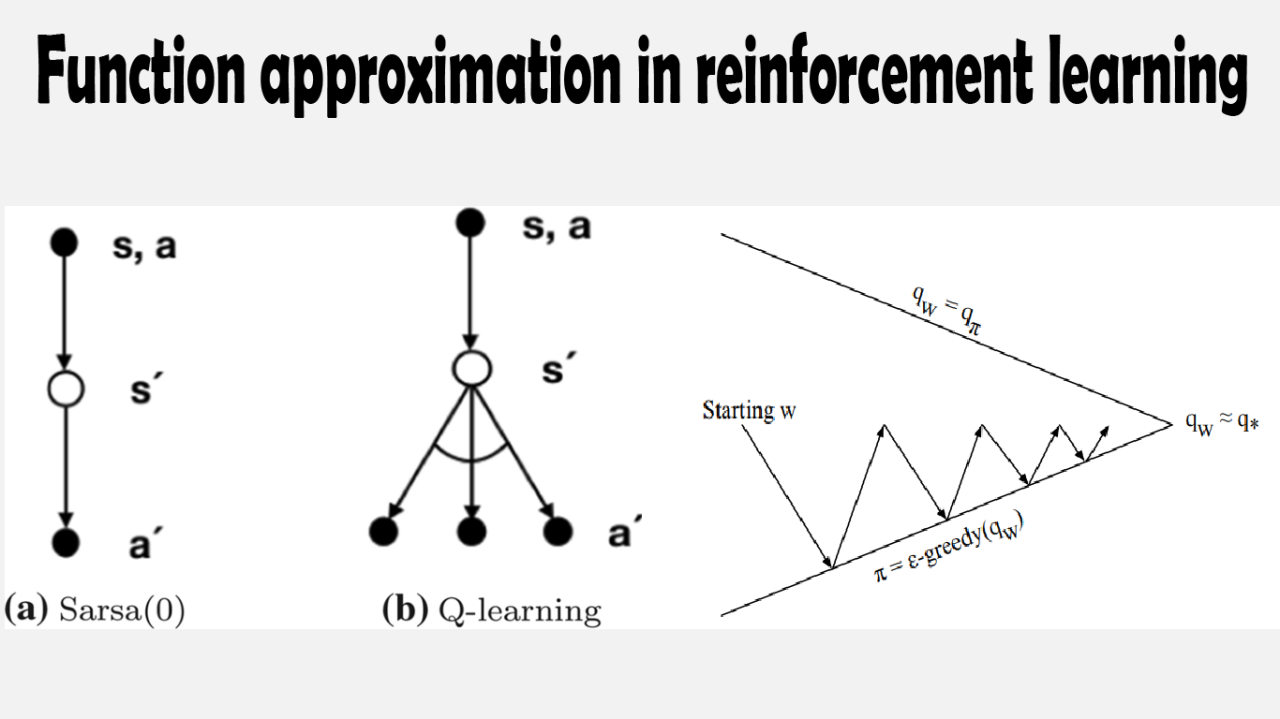
Function approximation in reinforcement learning (RL) refers to the process of approximating an unknown function that maps states to actions or values in order to make decisions in an RL environment. RL is a type of machine learning where an agent learns to make decisions by interacting with an environment and receiving rewards or penalties based on its actions. The goal of RL is to maximize the cumulative reward over time by learning a policy that maps states to actions.
In many RL problems, the state space is too large to be represented explicitly, making it impractical to store all possible state-action pairs in a table. Function approximation provides a way to generalize from observed states to unseen states by learning a function that approximates the true value or action-value function. This allows the agent to make decisions in new states based on its past experiences.
There are several methods for function approximation in RL, including linear regression, neural networks, decision trees, and kernel methods. Each of these methods has its own strengths and weaknesses, and the choice of function approximation method depends on the specific problem and the available data.
One common approach to function approximation in RL is to use neural networks as function approximators. Neural networks are powerful function approximators that can learn complex relationships between inputs and outputs. In RL, neural networks are often used to approximate the value function or policy function, which are essential for making decisions in an RL environment.
When using neural networks for function approximation in RL, it is important to consider several factors, such as the architecture of the network, the learning algorithm, and the training data. The architecture of the network refers to the number of layers, the number of neurons in each layer, and the activation functions used. The learning algorithm refers to the method used to update the weights of the network based on the training data, such as stochastic gradient descent or backpropagation. The training data refers to the experiences collected by the agent while interacting with the environment, which are used to train the neural network.
One challenge of using function approximation in RL is the issue of generalization. Since the function approximator is trained on a limited set of experiences, it may not generalize well to unseen states. This can lead to suboptimal decisions and poor performance in the RL environment. To address this challenge, researchers have developed techniques such as experience replay, target networks, and exploration strategies to improve the generalization capabilities of function approximators in RL.
In conclusion, function approximation in RL is a crucial component of reinforcement learning that allows agents to make decisions in complex environments with large state spaces. By approximating the value or policy function using methods such as neural networks, agents can learn to generalize from past experiences and make informed decisions in new states. Despite the challenges of generalization, function approximation remains a powerful tool for solving RL problems and advancing the field of artificial intelligence.
1. Function approximation in reinforcement learning allows for more efficient and scalable learning by approximating the value function or policy function using a parameterized function.
2. It enables the use of complex and high-dimensional state spaces in reinforcement learning tasks.
3. Function approximation can help in generalizing learned knowledge to unseen states, improving the overall performance of the agent.
4. It can reduce the computational complexity of reinforcement learning algorithms by representing the value function or policy function in a more compact form.
5. Function approximation techniques such as neural networks, decision trees, and linear regression can be used to approximate the value function or policy function in reinforcement learning.
1. Reinforcement learning algorithms
2. Robotics
3. Game playing algorithms
4. Autonomous vehicles
5. Natural language processing
6. Computer vision
7. Financial modeling
8. Healthcare applications
9. Industrial automation
10. Recommender systems

There are no results matching your search.
ResetThere are no results matching your search.
Reset